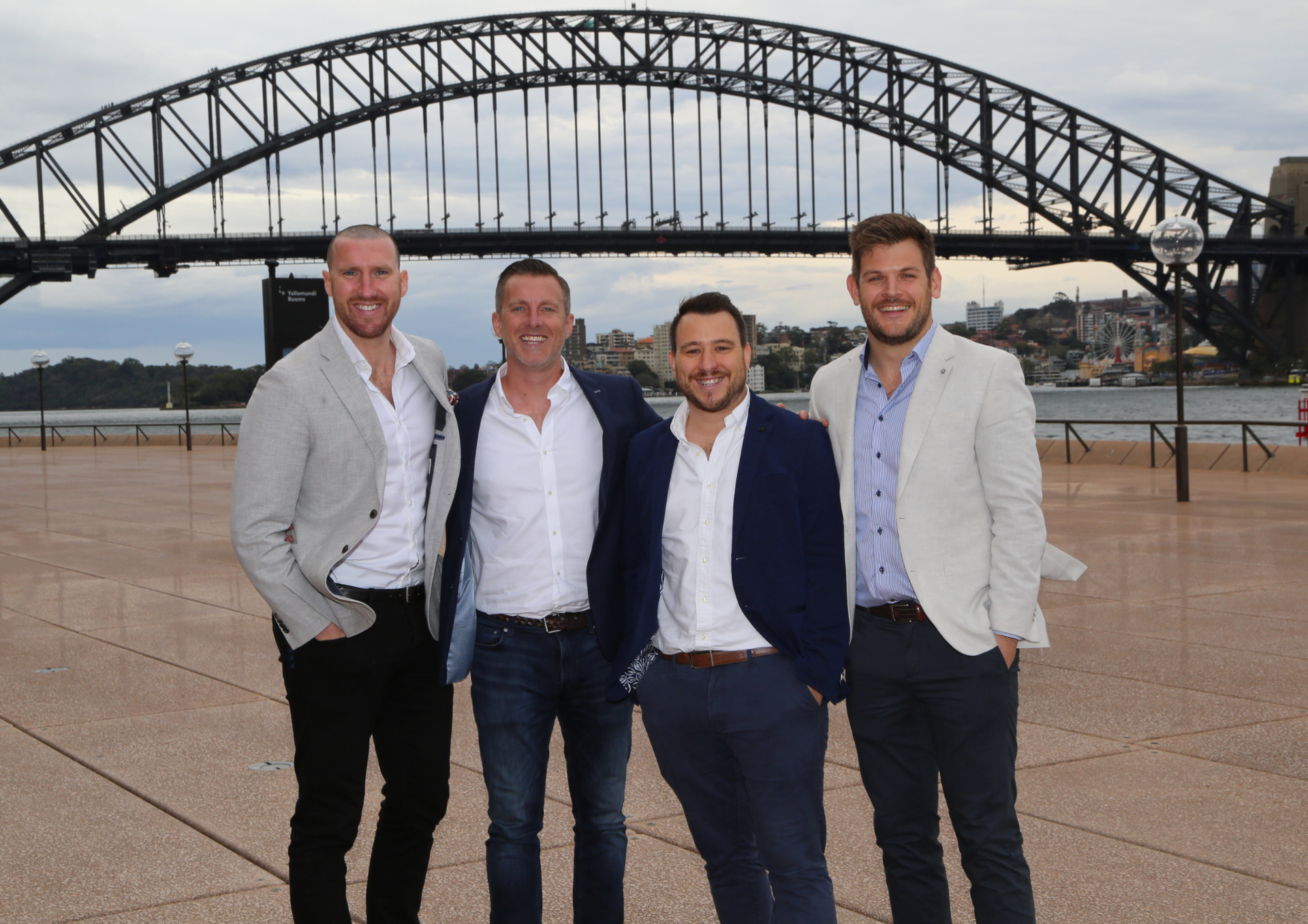Workplace Wellbeing Matters - How to Make a True & Tangible Impact In Your Business
There are many things in life that can be a bit hit and miss - traffic on the way to work, trying coffee from a new local hotspot and workplace wellbeing programs.
While most organisations understand the importance of these programs for both current and prospective employees, the design, execution and management of them isn’t always up to scratch.
Put simply, workplace wellbeing is all about how we feel at work. Wellbeing programs aim to facilitate these good feelings and address any issues.
If you’re wondering how to design a program that delivers measurable results to your business (by making your employees feel safer, healthier and more engaged), you’ve come to the right blog.
We recently held a webinar all about building a wellness program from the ground up. Hosted by Victorian State Director for Talenza, Peter Rodriguez, we got to hear some great insights and tips from our guest speaker, Ryan McGrory, Founder of Exsona, on exactly how to nail this thing!
If you’re still sitting there wondering if wellbeing is even something worth worrying about, let’s start with a few stats:
- Balance and wellbeing are among the top 5 attributes employees consider when they’re choosing an employer.
- The estimated ROI for mental health support programs is $2.30 - $4+ per dollar spent.
- Employees who are burned out much or all of the time don’t bring their best to work. They are 63% more likely to not show up at all and 2x more likely to look elsewhere for a job.
- All
mental health illness costs the economy
between $200-$220 billion a year (that’s 10% of our national GDP).
Let’s take a quick trip back in time
To kick things off, Ryan took us for a brief stroll along the history of how workplace wellbeing has been viewed and handled by organisations.
What started out as an attitude of leaving your personal life at home, grew to an understanding that we should support our employees wellbeing - not that we’ve always hit the nail on the head in this area.
The first acceptance phase was simply reactive. This was where we discovered that EAP’s were important and they quickly became the norm, but weren't anything super effective.
From here we entered into what Ryan terms the “sugar hit” phase, “where companies attempted to solve workplace wellbeing problems with fruit bowls, yoga and table tennis”. The obvious issue here being that this didn’t solve any of the root causes of workplace problems or address issues like toxic leadership, burnout or anxiety.
More recently, thanks to the pandemic, things have taken a more digital turn. Companies took on a bunch of expensive tech with plans and promises to solve all our wellbeing woes, but only a fraction of employees actually adopted these new services.
Now, Ryan feels we’re at a critical point where government legislation has stepped in to ensure companies take care of their employees wellbeing, but how will we choose to use this?
“Do we simply tick a box, go through the risk management process and make sure we’re compliant or do we actually take the right level of action to create a truly supportive and healthy workplace culture”?
If you’re sitting there thinking, that sounds nice and all but will it really have an impact? The answer, hell yes! In fact, Ryan shares that there are three key ways that having a solid wellbeing plan in place can help your employees:
- Improve happiness - by providing your people with opportunities to develop and giving them access to positive practices that will support their physical, financial, career, social and community wellbeing.
- Reduce risk - with great practices and programs in place, you can remove and control any factors in your workplace that might have a negative impact on a person’s wellbeing and mitigate any flow-on effect from this.
- Support people to get better
- if you have a sound approach to helping people who are sick or injured return to work, you not only get your best workers back sooner, they’ll return with a renewed sense of pride and loyalty to your company.
Step one - DISCOVER
No matter the size of your company, your budget or where you are on your wellness journey, Ryan’s wellbeing program can help you nail those wellbeing goals and make some serious improvements in your workplace - and it all starts with the “discover phase”.
As Ryan says, this phase is essentially an “inward exploration phase” where you look at where your company is at, what you need to address and where you want to go - this is where you discover your why. Let’s break it down into a few easy steps.
- Find your purpose and alignment - figure out where your business is currently at, what you want to achieve and how wellbeing can align with and help you achieve those goals.
- Review - how can you know what you need to improve or implement if you don’t already know what you’re missing or what isn’t working? Take the time to look at what’s going on in your company right now.
- Check out your competition - there’s no shame in checking out what your competitors are doing, especially if it seems to be working.
- Speak with your people - who better to tell you what they need then the people you’re actually trying to help. Spend time talking to your employees and get an understanding of what they want and what they think is missing.
Step two - DEVELOP
Now that you’ve gathered all your intelligence, what do you do with it? It’s time to step into the creative arena and craft the how with the develop phase of Ryan’s method.
- Generate ideas - research and brainstorm ideas on how you can implement and improve your wellbeing offerings.
- Involve your people - once again, who better to give you ideas than the people you’re trying to help. Invite your employees to participate and offer thoughts and suggestions.
- Get leadership on-side - the truth is, all these ideas are great, but if the big bosses don’t approve, they’ll never get off the ground. Bring your execs in early and get them on-side and ensure you actually have the resources to facilitate these ideas.
- Prioritise and decide features - sometimes when we brainstorm we can start to overwhelm ourselves with too many great ideas. Once you’ve got the ball rolling, it’s time to decide what features you need to prioritise and what actions will truly make the biggest impact.
Step three - DESIGN
If you really want a top notch program, Ryan says you not only need some solid initial research and visionary thinking, you need practical execution. This means it’s time to move on to the third phase - design.
For all our aspiring authors out there, this is where you get to become a storyteller. This is where you decide what exactly will be going into your program and figuring out how you frame the narrative for your people. It’s time to breathe life into these new programs and communicate what you’re doing.
- Create the story and brand - craft how you’re going to tell everyone what you’ve been up to and what’s coming.
- Create the engagement plan - you want to make sure no one misses the memo, so figure out how to make sure everyone not only hears about what’s coming, but knows how they can get involved.
- Decide on measurements - this isn’t a set and forget type situation. You need to measure and track your programs to understand if they’ve been a success. Depending on your specific goals, the KPIs you want to measure might be different from someone else, but things like participation rates, health outcomes, employee satisfaction and culture change are a few good places to start.
- Assess capability and risk - if something goes wrong, do you have the resources to fix and resolve it?
- Create the action plan - be super clear on what you need to do to get this plan off the ground.
- Deliver to key stakeholders - now is the time to get feedback from your execs, get their approval and get their buy-in.
Step four - DELIVER
It’s time to integrate all this hard work into your business and bring your wellbeing program to life!
- Create your comms plan - just before you leap into the fun part, time a moment to figure out how you want to roll out the new programs.
- Launch the program - this is the exciting part! It’s time to officially launch all your hard work and watch your employees enjoy their new benefits.
- Build your network - who are the key people who can help you continue to grow and develop these programs - who can become your ambassadors?
- Evaluate and monitor - as we mentioned earlier, this isn’t a set and forget deal. For ongoing success, you need to commit to providing continuous improvement to your programs.
Want to hear the full, in-depth conversation with Ryan and discover how to really nail your wellbeing offering?
Click here to view the full webinar.


Recruitment International Awards’ The Rising Star’ award winner 2018, 2019 & 2020 & Best Large Recruitment Agency 2021

The Global Recruiter Asia Pacific Awards Best Newcomer Award Winner 2019

Quicklinks
Disciplines
Get in Touch
Sydney: Level 7/10 Spring St, Sydney NSW 2000
Brisbane: 40 Creek Street, Brisbane City QLD 4000
Melbourne: Level 7, 222 Exhibition Street, Melbourne VIC 3000
© Talenza Pty Limited. All rights are reserved.




